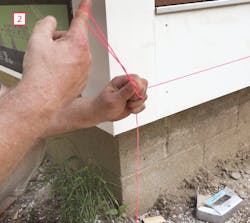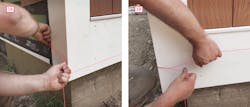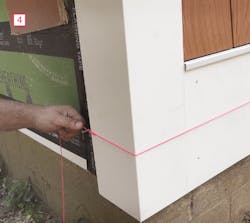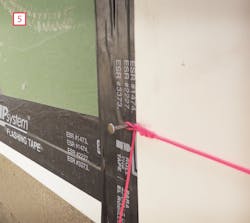Laser levels are handy tools, but sometimes just stretching a chalk line or mason line does the trick. Anchoring a chalk line is easy: Slip the metal clip over a nail at one end, stretch out the line and lock it, then wind the line around a nail a couple of times. The locked chalk line reel holds everything in place.
But sometimes a dry mason line is the way to go. Anchoring one end is a simple matter of tying a loop in the line and slipping it over a nail. The other end, however, is where a lot of people get tangled up. Tying a loop or knot will hold everything in place, but you have to do it while holding tension on the line. And if you want to reuse the string over several different distances, that’s a lot of tying and untying. It’s a small thing, but it makes a difference when you’re trying to keep the job moving. And when you throw in cold, wet weather and bulky work gloves, fooling with knots becomes annoying.
My solution is to make a simple series of twists that hold the loop tight on the nail. It’s a quick and easy way to lock the line in place, and because there’s no knot, it’s also easy to release the line without having to untie anything.
Stretch the line taut [1A] and fold it over to hook it around your finger [1B]. With your other hand, pinch the base of the loop.
Now make a circular winding motion with your finger [2] to create a series of twists in the loop. I usually make five circles.
Next, hook the loop onto the nail [3A], then pull the string tight to create tension [3B] while taking up the slack on the loose end.
Finally, pull the free end of the line back to the nail to lock everything in place [4].
To release the line [5], just tug on the loose end to let off the tension.
Get more Jobsite Know-How here
About the Author
Ben Bogie
Ben Bogie is a second-generation custom builder and remodeler in New Milford, Conn. This article is adapted from a video made in conjunction with ProTradeCraft.com during construction of Professional Remodeler’s 2017 Model ReModel project.





